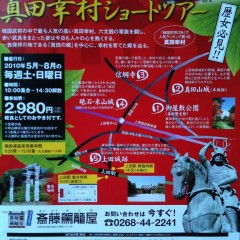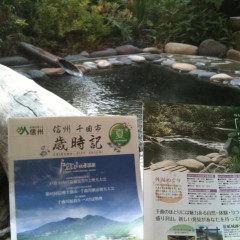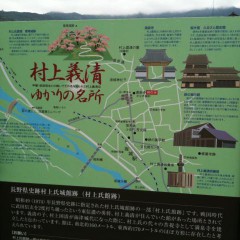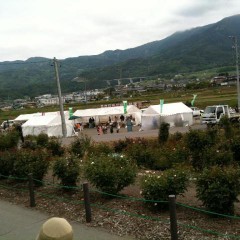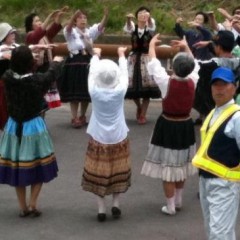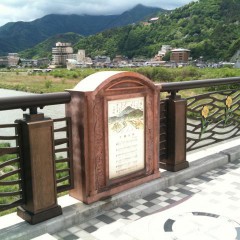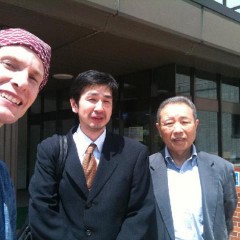真田幸村は東信の格好良い侍。亀清のお客さん達にお着きになる時にいつも聞きます:「どこか寄って来はりましたか」と。「真田幸村のファンなので上田城に行ってみました」と言う様な答えが多いです。(女性のお客様も!何百年たっても格好良い侍は格好良いそうです。)
恥ずかしい事ですが、私にはまだ関心があまりないです。正直って、勉強不足です。風林火山の事は色々と勉強して、関係場所を回って、関係した山城へ登って、地元の関係している地名の伝説を教えてもらって、やっと分かってきました。
しかし、真田三代に関してはまだまだ知りません。
昨日はバスツアー会社「斉藤駕籠屋」の栗原さんが来てくれて、新しく始まった「真田幸村ショートツアー」を紹介してくれました。毎週土・日に行われているそうで、朝10時に上田駅に出発して、真田歴史館や真田山城、信綱寺、上田城を寄って、2時半に上田城に戻る。途中で運転士が真田三代の詳しいことを話してくれて、それぞれの現地を案内してくれるそうです。
私にとっては興味深い話なので、早速今週の土曜日、6月5日のツアーに参加します。
どうですか?真田幸村の事、もっと詳しく知りたいでしょうか?ご一緒にツアーに参加しませんか?
(ちなみに、亀清旅館の週末のお部屋はまだ空がございますので、宜しかったら6月5日のツアーは宿と上田駅の間も一緒に行きましょう!)
"Sanada Yukimura" is eastern Nagano's cool samurai.
I always ask our guests when they arrive here at Kamesei Ryokan if they did any sightseeing along the way. Often times, guests reply they are Sanada Yukimura fans and stopped to see Ueda Castle. (Female guests, too. Apparently once a cool samurai, always a cool samurai.)
To be honest, I still don't have much of an appreciation for the whole Sanada deal. With the Kawanakajima samurai battle story, I took the effort to go see the various sites, climb to the various mountain castles, and ask about the legends behind local place names related to the Takeda Shingen / Uesugi Kenshin legacy, and have come to understand and appreciate the story.
A new tour has recently been established that offers to do the same thing for the Sanada story. Saito Kagoya is offering bus tours every Saturday and Sunday, departing Ueda Station at 10am, stopping at several Sanada-related sites with explanation and on-site guidance by the driver, returning to Ueda Station at 2:30pm.
This Saturday June 5th, I have been invited to attend. So if you are interested in the Sanada history, why don't you come and join this tour with me? The normal driver speaks a bit of English, but for this tour I'll be available for interpretation. We still have rooms available at Kamesei this weekend for anyone who wants to stay the night, and I'd be happy to give guests a lift between Togura Kamiyamada Onsen and Ueda Station. So give us a call!
バスツアーの詳しくは齋藤駕籠屋のHP Click here for more info on Saito Kagoya bus tours.
